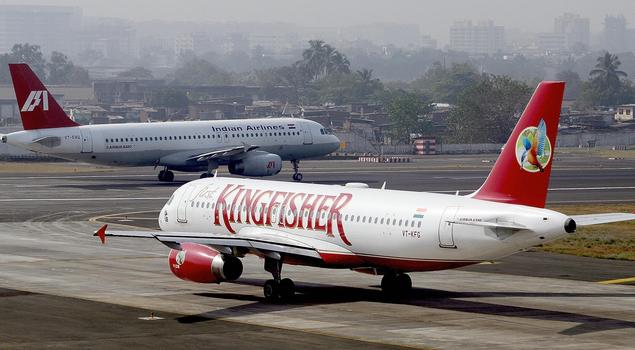July 14, 2016
Indian movies, literature, and often even real life, have always grappled with the looming presence of “the other woman”—the home-breaker. Her male counterpart, “the other man,” too, has had his share of infamy, but he hasn’t captured popular imagination as much.

July 14, 2016
Indian movies, literature, and often even real life, have always grappled with the looming presence of “the other woman”—the home-breaker. Her male counterpart, “the other man,” too, has had his share of infamy, but he hasn’t captured popular imagination as much.

Unless that man happens to be Indian prime minister Narendra Modi, who seems to be gaining a reputation for unwittingly splitting couples.
Last week, a betrothed couple in Kanpur in the northern Indian state of Uttar Pradesh called off their wedding at the last moment over searing differences over Modi.
“The woman government employee was convinced that PM Narendra Modi was responsible for the county’s poor economic condition, but the businessman was a Modi supporter. A heated discussion followed and the prospective bride and groom decided to part ways,” The Times of India reported on July 7.
In December last year, the same newspaper had reported the divorce of a married couple in their 20s. “The trouble in their paradise began in the run-up to the 2014 Lok Sabha elections when the husband confessed to being a big Modi fan while the wife vehemently supported Aam Aadmi Party,” the report said.
On the face of it, these episodes may seem amusing. Yet, they are indicative of a deeper polarization that Modi has affected in India. Even my husband and I don’t meet eyes [see eye to eye?] when it comes to this man.
Over the last few months, the two of us have rarely argued over the things that married couples typically do, except when it comes to Modi.
So, every morning, as we browse the news together, the conversation typically goes like this:
Me: One more ban. What’s even happening to India?
He: Now don’t start blaming Modi for this also.
Me: Who else is to be blamed then? These things never happened until two years ago.
He: But this is a state subject, Modi has nothing to do with this.
Me: Then why is it all happening now?
He: You just need a reason to blame Modi.
And it’s not just with my husband. I have had such arguments with friends—on Twitter and Facebook, at the dinner table, at the gym, at school reunions—pretty much every time I voiced an opinion about what’s happening in India under the current prime minister. The name “Modi” is creating foes out of friends at a furious pace.
Leave aside his policies, even a mild observation on his sartorial tastes is enough to fuel passive-aggressive responses from friends.
For instance, in January 2015, Modi wore a pin-striped suit with his own name all over it. I mentioned to a friend that I would never wear something like that. I expected her to reply with a casual “okay,” but I was caught off guard when she said: “Who are you to comment about fashion? Do you know anything about designer wear? Also, do you even know who all in history have worn such suits? Read up about world leaders before commenting.”
Modi has been part of India’s political conversation right from the days of his long and controversial stint as chief minister of the western Indian state of Gujarat, but the debate over him intensified in the run-up to the 2014 elections.
Perhaps a sign of how far India has come from just a few years ago can be gauged from the fact that back then parody news websites like fakingnews.com wrote about couples splitting over Modi. Today, it is a reality.
The pro- and anti-Modi sentiments have crept deep into personal lives. There are those who worship Modi and those who revile him. Few take the middle path. “There is a vertical split… in families, among brothers, friends, classmates, in social media groups, etc,” a colleague noted, reacting to the news about the Kanpur couple.
Another colleague shared her experience with a friend who stopped talking to her because she didn’t praise Modi much. “He (the friend) didn’t even reply when I wished him for his birthday,” she said.
These extremes are often amplified by the media and social networking portals.
Everybody’s PM?
Of course, Modi did emerge victorious in the 2014 general election with a massive margin. His rise came after a decade of a Congress party-led coalition that was completely out of its wits by the end of its tenure. Riddled with massive scams, the Manmohan Singh government seemingly stumbling from one disaster to another.
Hence, on May 16, 2014, when the election results were declared, it was clear that it wasn’t only the right-wing Hindus who had voted for Modi.
I was not among those who were sold on the Bharatiya Janata Party’s (BJP) prime ministerial candidate. But I was desperately seeking change. On the day of vote counting, I was excitedly texting my husband cliches including Modi’s slogan “ache din aa gaye” (the good days are here) every time there was an update in BJP’s favour.
Nearly two-and-a-half years on, things are not the same.
Despite Modi’s historic mandate, his inability to be generous in victory or refusal to bridge that national divide has been jarring. If anything, Modi may even have worsened the ferment, thanks to his disturbing silences at critical moments and perceived backing of social media trolls who, without fail, vitiate the political discourse. As an educated couple in urban India, we now sometimes even find ourselves debating what constitutes being Indian.
This divide is now evident at corner shops, tea-stalls, pubs, and in bedrooms.
Courtesy: Quartz
















































































































